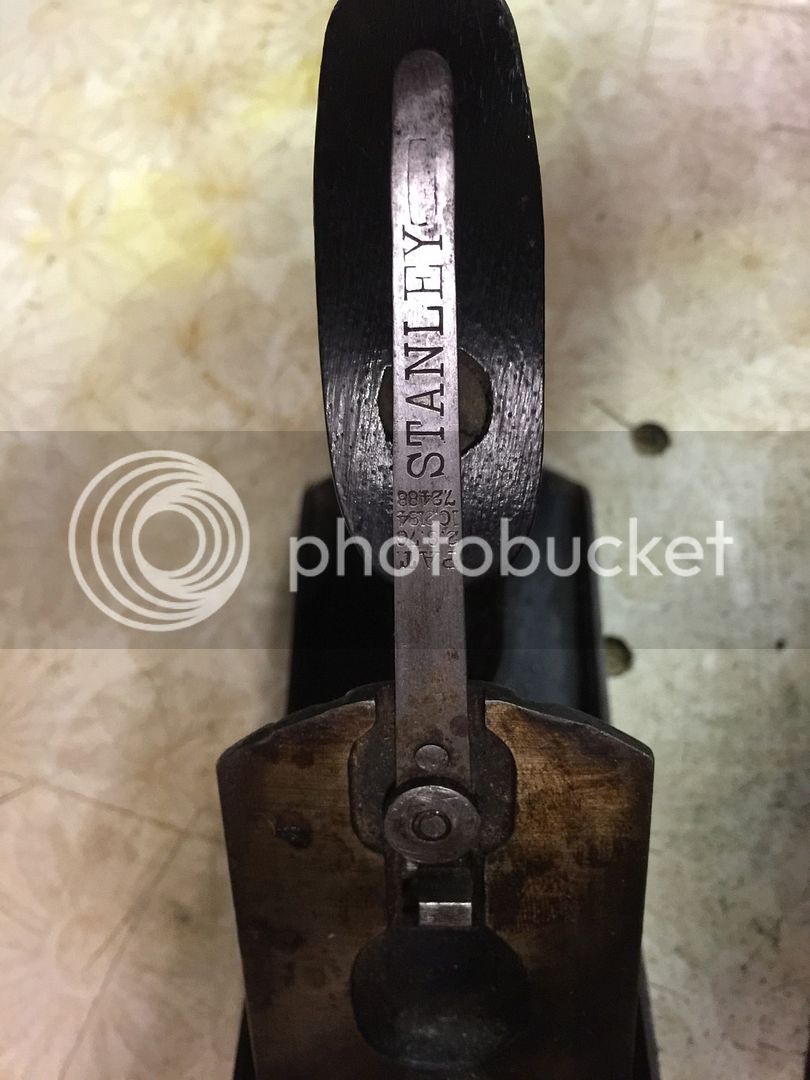Picked up a bit of an oddity yesterday. It's a No7, with the low front knob, but not sure of what/where/when. The only numbering/lettering is the 7 on the toe and what looks like a later STANLEY on the lateral adjuster. (sorry - doesn't show up on the picture) There are what might be the remains of two rivets behind the tote which could have been to hold some sort of metal label lengthways along the body. The yoke is a casting and the adjuster works clockwise, unlike modern planes, but no idea whether the frog belongs to it or was transplanted from elsewhere. When I acquired it it was "fitted" with a tapered Sorby iron! Tried it with a modern Stanley iron, but that is too thin to sit properly on the frog as the reinforcement round the adjuster on the cap iron is too thick for it. But found a Ross and Alexander parallel iron and this fits fine after a bit of easing of the adjuster slot.
Questions:-
1. Who might have made the body - is it actually Stanley, or if not who?
2. Does the frog belong with it, or is it some sort of Frankenplane (in addition to the tapered iron)
3. Does anyone have any information about Ross and Alexander? No idea where the iron came from (almost certainly a car boot round Milton Keynes) and the only references via Mr Google are to a fleabay sale of a Ross and Alexander (London) chisel.
Pictures below, but done in a hurry so not of the best quality.





Questions:-
1. Who might have made the body - is it actually Stanley, or if not who?
2. Does the frog belong with it, or is it some sort of Frankenplane (in addition to the tapered iron)
3. Does anyone have any information about Ross and Alexander? No idea where the iron came from (almost certainly a car boot round Milton Keynes) and the only references via Mr Google are to a fleabay sale of a Ross and Alexander (London) chisel.
Pictures below, but done in a hurry so not of the best quality.
































































